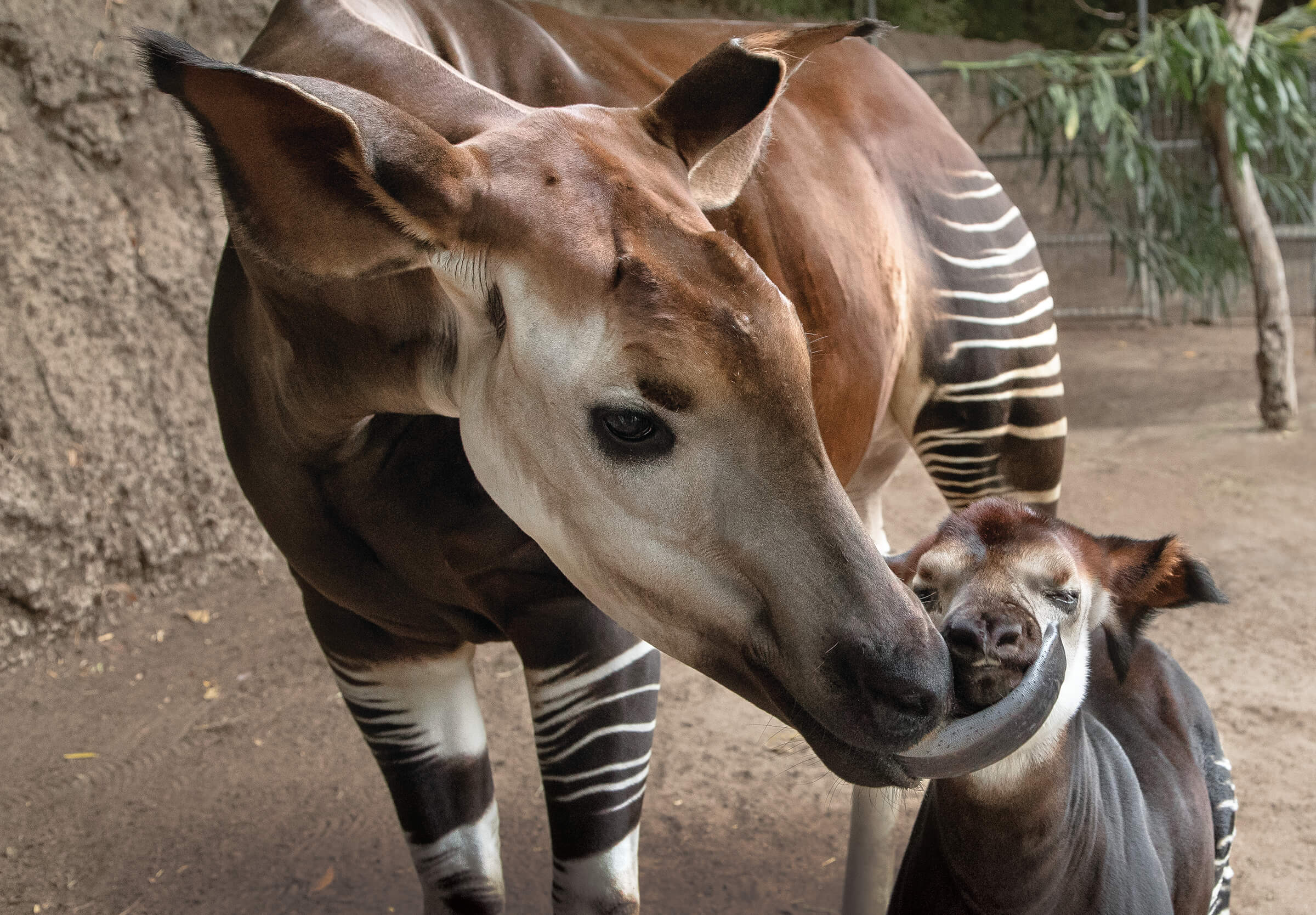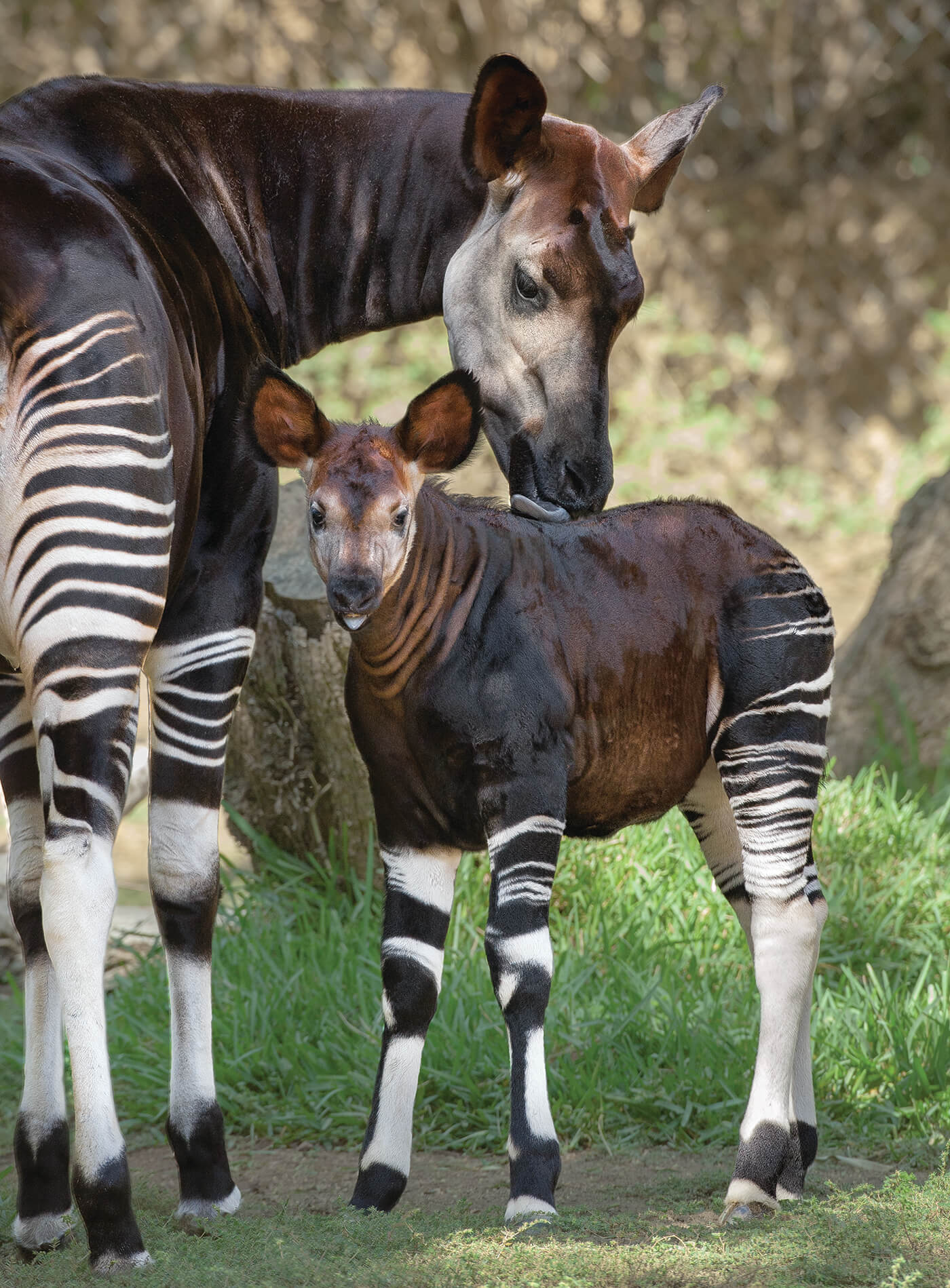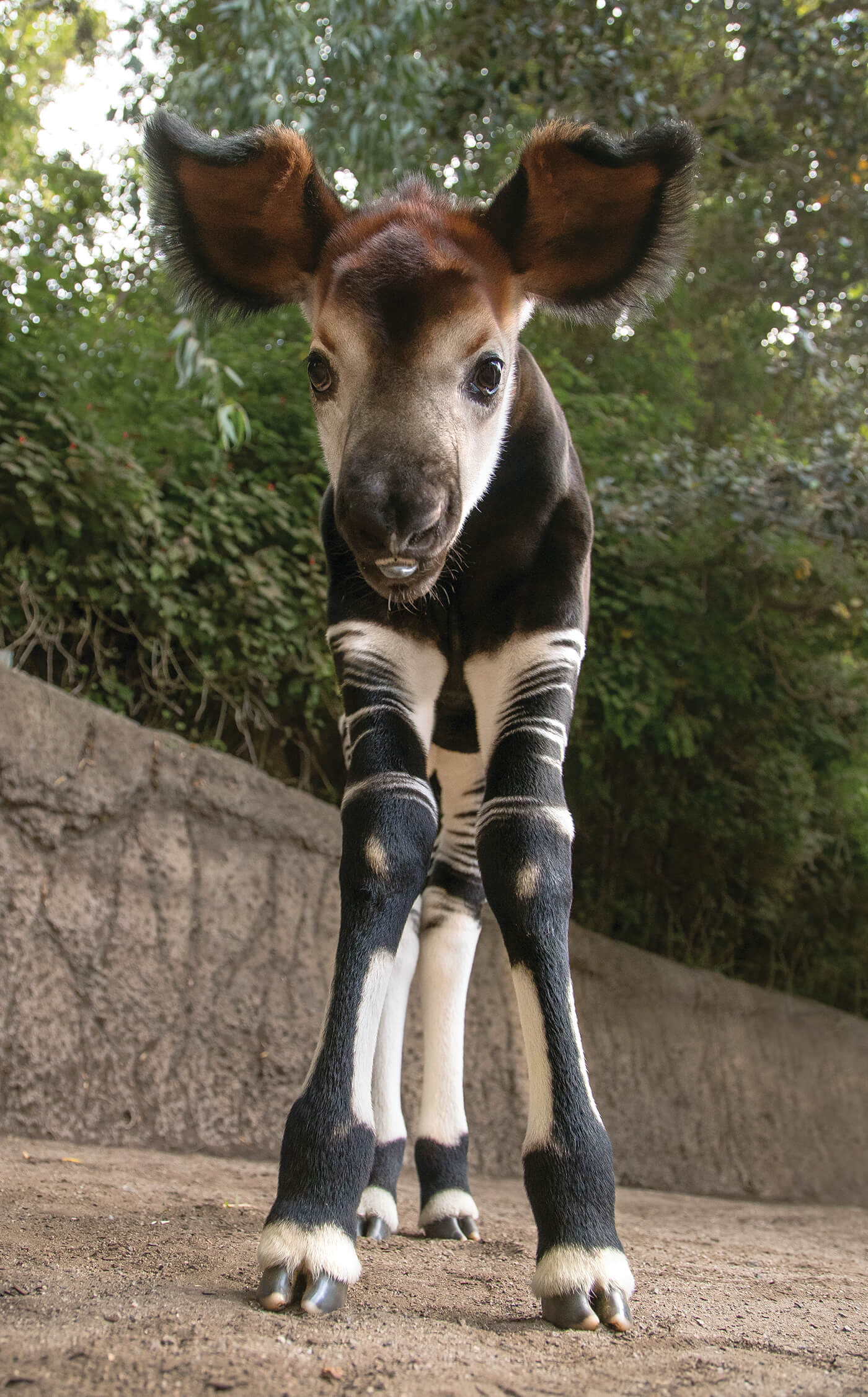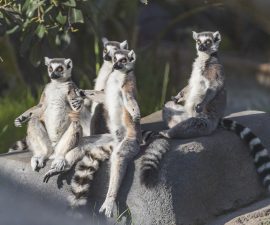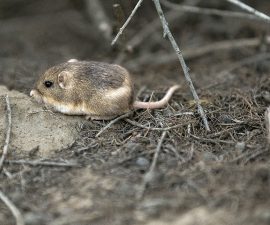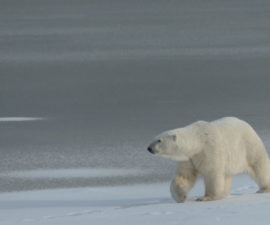The relationship between a zoo-born okapi and its keepers is a bit of a balancing act. One objective is to build trust and tractability, in order to provide the best possible care without causing undue stress. But at the same time, keepers strive to keep an animal wild and preserve its natural behaviors. Both goals are important to the well-being of a zoo baby—of any age.
BY Donna Parham
Photography by Ken Bohn
Earlier this year, keepers welcomed a brand-new okapi calf to the Zoo’s Ituri Forest, and like Zoo-born okapis before him, he’s off to a great start. “I like to think of it as a working relationship,” says Jennifer Chapman, senior keeper. While okapi fathers do not participate in raising offspring, Jennifer emphasizes the role of an okapi mom. In the most recent birth, that’s six-year-old Subira, who she says is “doing a stellar job” raising her first-born, a male named Elombe, now nearly four months old. She says, “We work together as a team, and structure our relationship based on their natural behavior.”
THE BABY HAS LEFT THE BARN
Elombe the okapi calf can now be seen on exhibit in the Zoo’s Lost Forest. Born in January, Elombe—whose name means “brave one” in the Lingala language—is affectionately known as “Eli” and is the second surviving okapi calf born at the Zoo in less than two years.
For okapi keepers, that means supporting a maternal behavior called “tucking.” For the first six to nine weeks, an okapi mother leaves her baby “home alone” while she forages, hiding it in a forest nest and returning regularly to allow the calf to nurse. At the Zoo, that nest is a cozy barn with a padded floor and a drinking station. Keepers add a soft layer of hay. Inside the nest, a baby okapi’s job is to rest, grow, and nurse when mom comes home. By the time it’s about two months old, the calf will be ready to follow its mother as she forages.
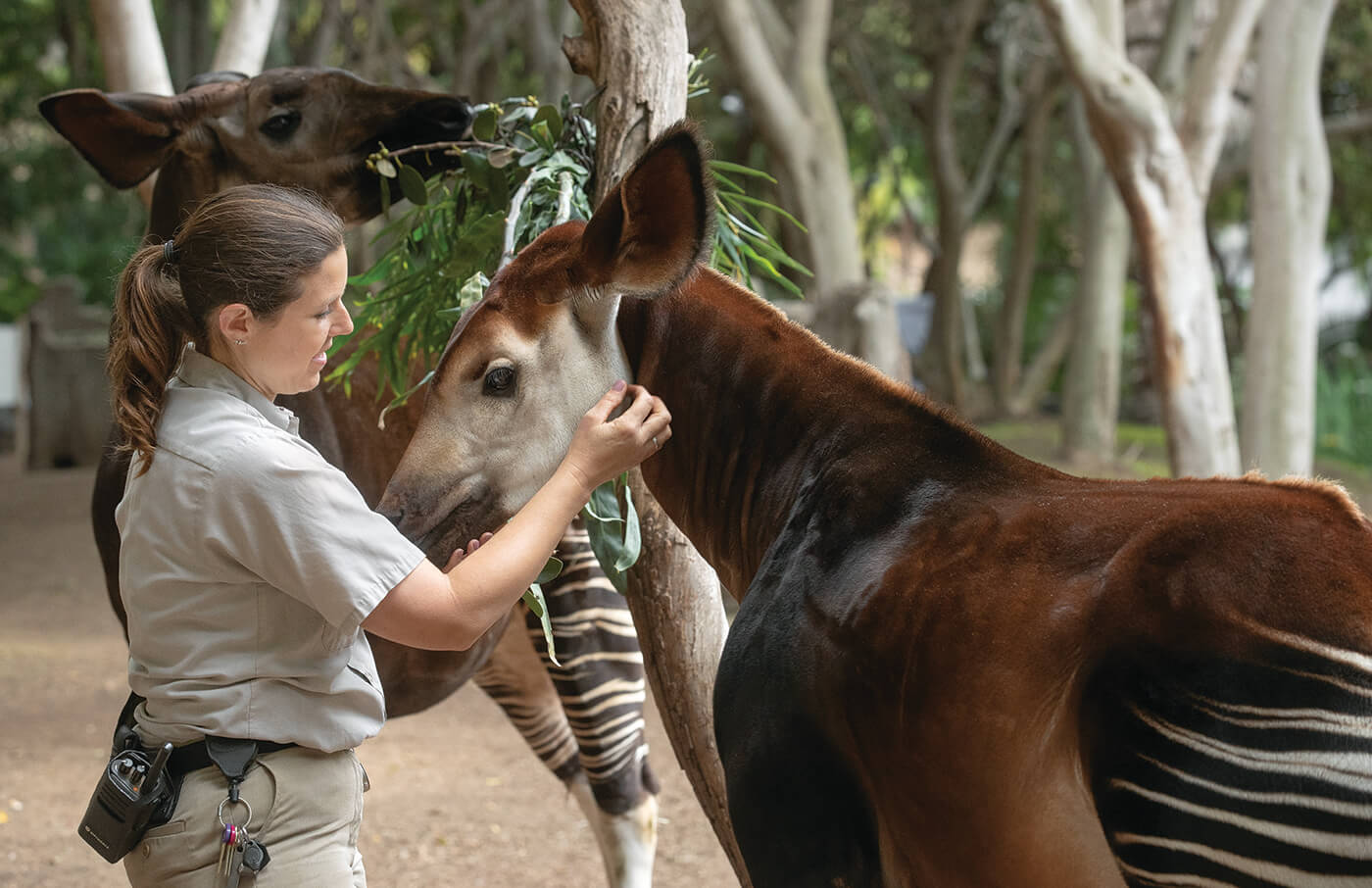
GETTING TO KNOW YOU
Over time, okapi calves become comfortable with their human caregivers, such as senior keeper Jennifer Chapman.
Unlike a mother okapi, keepers can watch a calf’s every move in the nest, on a high-tech baby monitor: four cameras capture and record the action—or lack of it. “They sleep a lot—like babies are supposed to do,” says Jennifer, pointing out that Elombe sleeps curled in the characteristic tucked position. “In the morning, we view the video from the night before,” she says. “We check the footage to see how long a calf nursed, and to make sure that mom and baby are both getting good rest. Elombe is doing very well; he’s very comfortable.”
Subira’s maternal behavior is right on target, too. After the 14-month gestation, keepers were excited when they noticed Subira holding her tail high, and they spied tiny hoofs emerging. Within two hours, she gave birth to bonny baby Elombe. Keepers and veterinary staff watched with bated breath to see her reaction. “Sometimes first-time moms can be aggressive,” says Jennifer. “Sometimes they are afraid of the baby and have no idea what to do with it.” But to everyone’s relief, Subira immediately began licking Elombe with her long, purple, prehensile tongue. Cleaning up the newborn this way is good, Jennifer says. “It stimulates the baby.” Keepers watched joyfully as Elombe sat up, and then came to his feet for the first time. Within 45 minutes of standing, the new calf was successfully nursing.
When, hours or days after giving birth, an okapi mother tucks her new baby in the nest (the barn) and strolls out for a bite to eat—just as she would in the wild—keepers and veterinary staff move quickly to examine the new arrival. While Elombe was separated from his mother, “We examined him, weighed him, and took blood samples,” says Jennifer. “Everything looked great, and he did very well. He was calm and didn’t call out.” Mother, however, was not as complacent. “Subira was not very happy,” says Jennifer. But on the bright side, her protective behavior showed she is a good mom, and she “got over it quickly”—something that can be attributed to the trust between the first-time mother and her keepers.
Zoo and Park keepers have plenty of experience caring for okapi calves. Okapis first came to the San Diego Zoo in 1956, and since then, there have been more than 70 births at the Zoo and Park. Before Elombe, Mosi was the baby of the bunch; now, he’s nearly two years old. Okapis are shy animals, and keepers observe well-established protocols to keep calves and mothers relaxed and healthy.
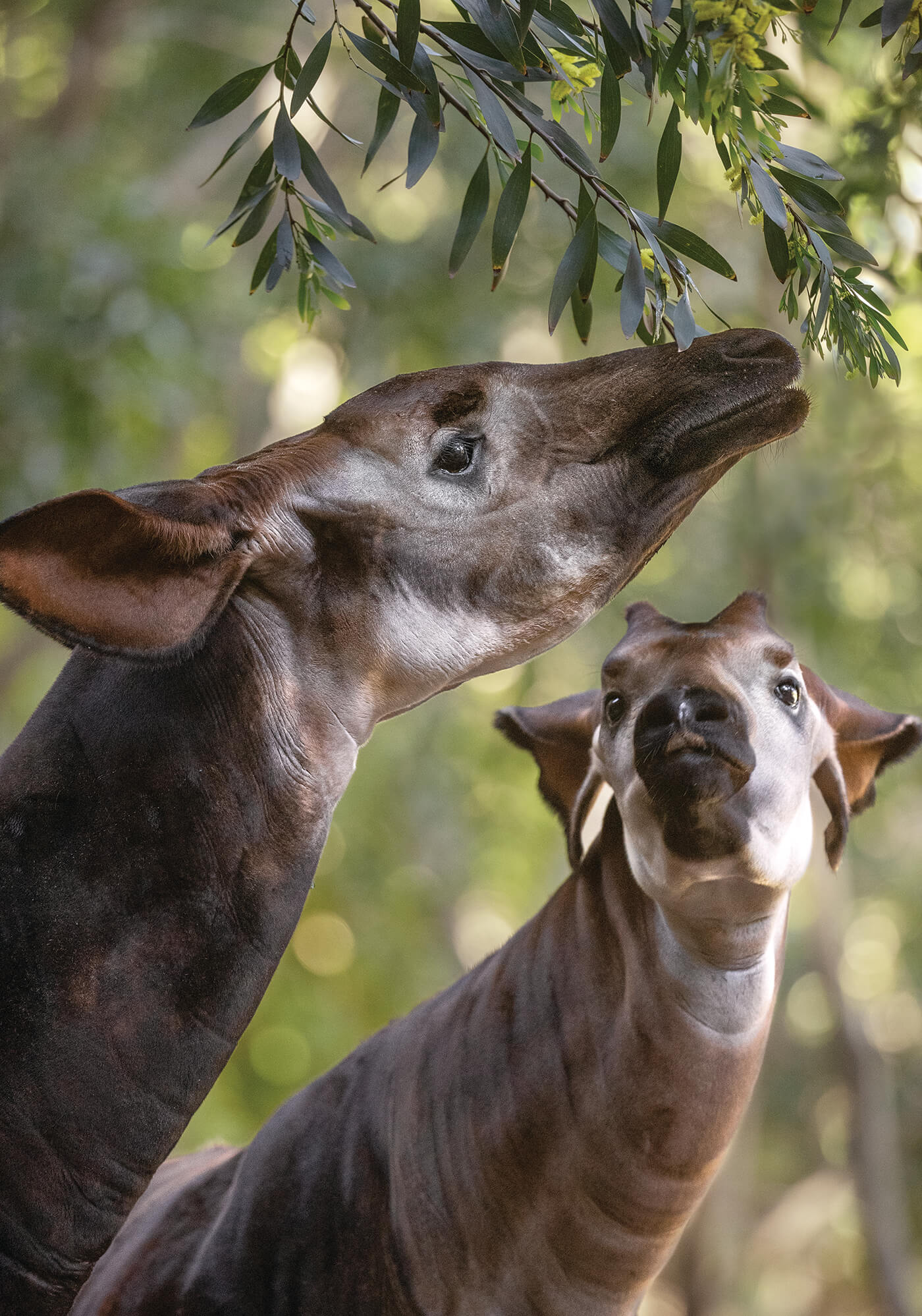
“FOREST GIRAFFES”
A resemblance to giraffes—the okapi’s closest relatives—is apparent as okapis pull leaves off of overhanging branches.
The goal is for okapi calves to be comfortable with their human caregivers around. “We talk to them softly, and use little touches to get them used to us,” says Jennifer. Okapis who trust their human caretakers have a soft spot for a good behind-the-ear scratch, something Jennifer says will eventually be used as a reward. “Once a calf starts eating solid food, we can start to use food as a reward, too.” Such rewards help keepers shape behaviors—like approaching a target or even just holding still—that allow them to provide the best care. For now though, keepers are letting mom Subira and baby Elombe set the pace. Jennifer says, “As far as our next steps go, we’re going off what they want.”
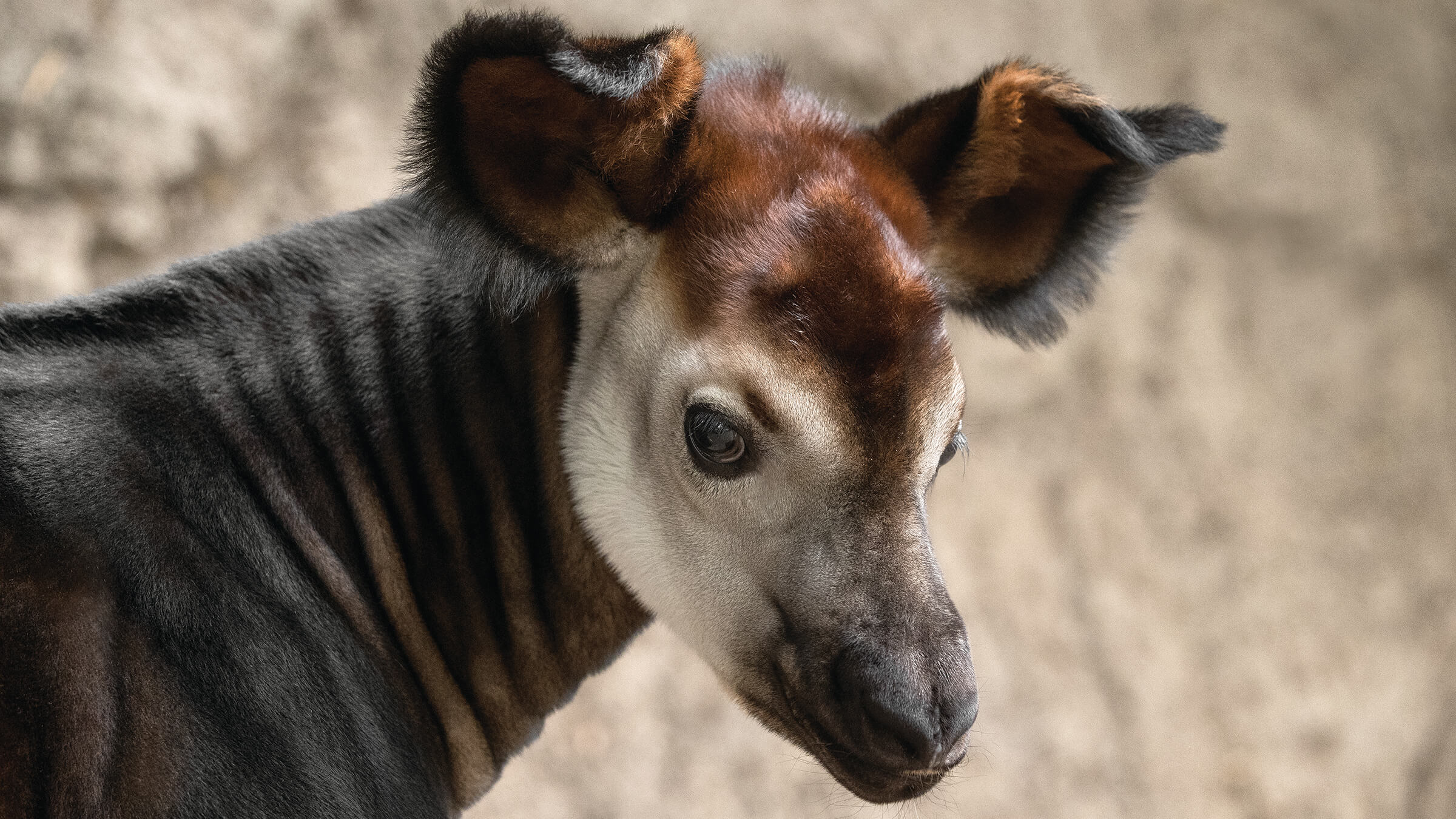
Conservation in Action
The okapi is listed as Endangered by the International Union for Conservation of Nature (IUCN), and San Diego Zoo Global (SDZG) is part of the Association of Zoos and Aquariums’ Okapi Species Survival Plan. We exchange animals with other AZA-accredited breeding institutions to maintain genetic diversity in the North American population. Along with other zoos and conservation organizations, SDZG contributes to conservation efforts in the wild by supporting the Okapi Wildlife Reserve, a World Heritage Site providing the species with a place removed from most human interference. This reserve occupies about one-fifth of the Ituri Forest and is home to about 5,000 of the estimated 30,000 remaining okapis.

